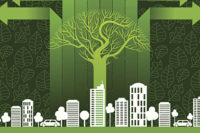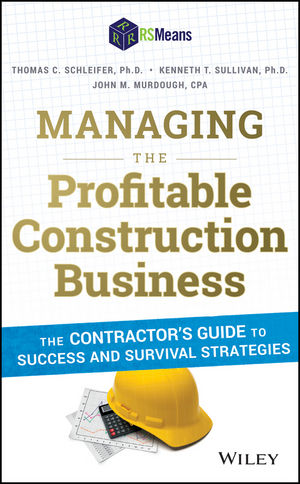The Top Five Questions About ‘Greening the Roof’
Dr. Hoff Answers Readers’ Queries About Sustainable Products and Systems

Dr. Jim Hoff currently serves as vice president of research for the Center for Environmental Innovation in Roofing in Washington, D.C., and as president of TEGNOS Research Inc., a consulting organization dedicated to expanding understanding of the building envelope. He’s also the instructor of the upcoming “Commercial Roofing Boot Camp” — an advanced online design course that has been approved by RCI for 20 RCI CEHs and 20 AIA Learning Units.
In advance of the course, Dr. Hoff responded to readers’ most common questions about environmentally friendly, green and sustainable roof systems.
Question 1: When I talk to building owners and architects who want a LEED building, the only thing they want to know about the roof is whether or not it’s white, because white roofs get a LEED credit. Isn’t this a very shortsighted way to design and spec a roof?
Dr. Hoff: Yes, it is very shortsighted; and I’ll be the first to admit that changing the narrow focus on white roofs supported by the LEED heat island credit is very difficult. Probably the best tool available to improve the discussion about roof surface color is the RoofPoint program developed by the Center for Environmental Innovation in Roofing. RoofPoint recognizes the “greenness” of roofs using twenty three different credits, and only one of these credits addresses roof surface color. And even the roof surface color credit in RoofPoint allows the use of darker roofs in the coldest climates and also provides for other cool roof alternatives such as ballast in all climate zones. It’s a great program to help educate building owners and help demonstrate that you can be a valuable expert on the best in sustainable roofing practices.
Question 2: How can I go about integrating green into my business?

Dr. Hoff: I think it’s important to integrate green into your business in three basic ways. First, focus on one or two sustainable roofing strategies that could provide real value for your customers. As an example, if you reroof a lot of warehouses for a local developer, consider integrating daylighting – or skylights – into your roofing proposals. There are many excellent design tools available to help you get started, and the payback is very good, especially if you can integrate the skylights into the lighting controls. For businesses with high hot water needs, such as laundries, car washes, etc., rooftop solar thermal can also be a profitable add-on to the next reroofing project.
Next, look for ways to get your employees involved. Is there a company-wide policy regarding recycling? Do you emphasize that worker safety is just as green as any other green practice – after all green is fundamentally about people.
Finally, combine the one or two green sales strategies and green employee policies and start to reach out to the community. Instead of buying uniforms for a local ball team, consider what you could do to help your community save energy and reduce waste – and when you do it will only help promote your own green practices and increase your reputation as a sustainable business.
Question 3: I like green as in sustainable, but I also like green as in profit. How can I turn sustainable practices into the kind of green my bank accepts for deposit?
Dr. Hoff: I had the opportunity to present an educational session at the 2012 International Roofing Expo (IRE) on this subject. The presentation was titled “Turning Green into the Black,’ and it covers dozens of strategies to make sustainability work for your company. After the presentation, I also wrote a brief column in Roofing Contractor summarizing the presentation, and the column is still available online along with a link to the original IRE slide presentation. For more information, please follow this link: http://www.roofingcontractor.com/articles/89530-turning-green-into-the-black
Question 4: Are you concerned that some new “green” roofing products aren’t yet proven to be durable?
Dr. Hoff: Yes, I do have many concerns. My own roofing career started during the single-ply revolution of the 1970s and 1980s, and I know from hard experience how difficult it is to integrate new technologies into proven roofing practice. But I also recognize that time doesn’t stand still, and we need to find ways to use new green roofing products without exposing ourselves and our customers to potential risks.
- Learn as much as you can about vapor retarders and how they need to be installed to actually work. Along with increased interest in cool roofs which tend to accumulate condensation and the use of air barriers to tighten up the building, we could easily experience premature roof failures due to long-term moisture damage unless we keep the moisture out in the first place.
- Given the significant increase in insulation thicknesses, cover boards are almost mandatory to protect all of that very expensive R-value from damage. And the same goes for thermal barriers beneath the insulation, which can serve as a very effective platform for installing air barriers and vapor retarders.
- With reductions in the VOC content of roof adhesives, cold weather application of fully adhered roofs is very, very tricky. So, invest in insulated “hot boxes” to store adhesives and keep them at a decent temperature on the roof.
Question 5: The latest energy codes require levels of roof insulation two times or more than what we installed just a few years ago. Is the payback there for the building owner? Are there potential performance problems associated with so much roof insulation?
Dr. Hoff: For better or worse, current building – and roof – insulation requirements are based more on national energy policy than quick ROI for the building owner. But since it’s the law in most states and jurisdictions, the best thing a building owner can do is be sure to protect his investment in all that insulation so that he gets every penny of energy savings available. That means a roof with lots of insulation and no vapor retarder and coverboard is a very foolish investment.
More About Commercial Roofing Boot Camp
If you’re interested in learning more about green trends in commercial roof systems, check out “Commercial Roofing Boot Camp,” a detail-oriented, self–paced online course that combines video lessons, reading assignments, and hands-on calculations and homework.
For more information about the course, you can take a free “Test Drive” by clicking here.
You can also view a free video lesson by clicking here.
Questions from our readers will also be the focus of a free half-hour webinar on April 2 at 1 p.m. Click on this link to sign up for the webinar.
Looking for a reprint of this article?
From high-res PDFs to custom plaques, order your copy today!





